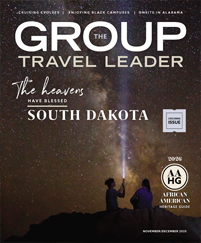Paris has da Vinci’s “Mona Lisa.” Madrid has Dali’s “The Persistence of Memory.” Florence has Botticelli’s “Birth of Venus.” But you don’t have to have a passport to experience the profound impact and deep connection that works of art from around the world have to offer.
These American museums boast a wide range of impressive collections from other countries that will inspire and delight.
Lila Acheson Wallace Galleries of Egyptian Art
The Metropolitan Museum of Art
New York City
In New York City, The Met’s massive collection of approximately 30,000 objects from ancient Egypt dates back as early as 300,000 BC to the 4th century AD. These pieces, important for their artistic, historic and cultural meanings, can be seen throughout the 38 galleries that showcase the collection and take the visitor on a journey through Egyptian history, beginning with the Predynastic Period (4500 BC) and ending with the last phase of Rome’s occupation of Egypt (AD 400).
The vast collection was established in 1906 when the museum created the Department of Egyptian Art to oversee what the museum already owned and, in the same year, commissioned an expedition that went on to conduct archaeological excavations in Egypt for nearly 30 years. As a result of their work, numerous objects were gifted to the museum by the Egyptian antiquities service, making up the core of the collection today.
Notable pieces in the collection include the Temple of Dendur, a 2,000-year-old temple that was commissioned by the Roman Emperor Augustus; the Old Kingdom offering chapel of Perneb’s mastaba; the jewelry of Princess Sithathoryunet; and the temple statues of Dynasty 18’s female pharaoh Hatshepsut.
Groups are welcome but limited to a maximum of 50 people. Private guided tours may be requested through the museum’s website.
Adolpho Leirner Collection of Brazilian Constructive Art
The Museum of Fine Arts
Houston
The Museum of Fine Arts in Houston is home to one of the most significant collections of Latin American art in the United States and offers what some believe are the finest examples of Geometric Abstraction by Brazil’s most significant artists of the post-World War II era.
Adolpho Leirner was born in Sao Paulo, Brazil, but went to college in England, where he studied textile engineering and design. While he was there, he became interested in architecture and design and started learning about the Constructivist movements of the first half of the 20th century. It was after he returned to Brazil that he purchased his first work, “In Red,” by artist Milton Dacosta, and then went on to collect more than 100 examples of Concrete and Neo-Concrete groups between the 1950s and 1960s. The collection includes artists such as Lygia Clark, Waldemar Cordeiro and Helio Oiticica.
Groups of 10 or more can request self-guided group visits or docent-guided group tours, which are available by reservation through the group ticket sales office.
Cone Collection of Modern Art
Baltimore Museum of Art
Baltimore
While most art collectors associate the works of Henri Matisse with France, you will find the largest collection of his art at the Baltimore Museum of Art, thanks to two sisters who devoted their lives to the pursuit of beauty and collecting bold, modern works. Claribel and Etta Cone traveled extensively during their lifetimes, acquiring more than 3,000 pieces of art, including 600 works by Matisse, like his iconic “Blue Nude.” The museum’s collection also includes pieces from other modern artists, such as Picasso’s “Mother and Child,” Cezanne’s “Mont Sainte-Victoire Seen from the Bibemus Quarry” and Van Gogh’s “A Pair of Boots.”
Other international galleries include Africa, Asia, Europe, the Americas and the Pacific Islands. Group tours are offered by the museum, limited to 60 or fewer people, and can focus on a specific theme, such as collection highlights, contemporary art, Black artists and the Cone Collection.
Richard and Erna Flagg Collection of Haitian Art
Milwaukee Art Museum
Milwaukee
In the early 1970s, Richard and Erna Flagg began collecting 20th-century Haitian art, and over the next 20 years, they amassed one of the most comprehensive collections of its kind. Eventually, the Flaggs gifted their collection to the Milwaukee Art Museum so as many people as possible could enjoy it and get a rare insight into how the Haitian visual culture developed. The 90 pieces are celebrated for their Vodou religious symbolism and Christian iconography. The collection showcases masterworks like Hector Hyppolite’s “The Adoration of Love,” Rigaud Benoit’s “Haitian Family” and Serge Jolimeau’s “Demon.”
Guided tours are led by docents and last one hour. Groups of 10 or more should request their group tour at least eight to 10 weeks in advance.
Chinese Collection
Nelson-Atkins Museum of Art
Kansas City, Missouri
Imagine the origins of a museum coming from the generosity and imagination of two complete strangers. That’s the story of Kansas City’s Nelson-Atkins Museum of Art, whose genesis happened thanks to a newspaper man leaving his wealth behind to purchase works of art for a new public museum, and a retired school teacher who left funds after her death to purchase land for that museum. Both individuals, who likely never knew each other, dreamed of a public art museum where anyone could visit and enjoy the beauty and culture of fine works of art. Together, their gifts made that common dream a reality.
The museum is most known for its Chinese collection. Considered one of the finest collections in the West, it features more than 7,000 works showcasing every era of Chinese art, thanks in part to one of the museum’s first curators, art historian Laurence Sickman. He began purchasing numerous pieces of Chinese art that didn’t cost much but had an undeniable presence and begged for someone’s attention.
Some of the collection’s most famous pieces include a 12th-century polychrome wooden sculpture, “Guanyin of the Southern Sea,” as well as ancient Chinese bronzes, jades and an extensive collection of Chinese paintings. As part of the collection, there is also one of the largest groupings of scroll paintings outside of Asia, which includes the only work attributed to Qiao Zhongchang, a master of the Northern Song Dynasty.
Groups of up to 60 people can request a docent-led guided tour. Tour themes range from collection highlights to religion in art and custom requests.
Getty Villa Museum
J. Paul Getty Museum
Los Angeles
Businessman J. Paul GettyInter’s work in the oil industry made him extremely wealthy, and he used his wealth to collect beautiful art, which he saw as a civilizing influence on society. His collection became so vast, he eventually built a museum in Malibu, California, to house it and modeled it after an ancient Roman villa.
Today, visitors can walk through this re-created Roman country home and its four tranquil gardens and explore over 4,000 years of ancient art, from the Stone Age to the final days of the Roman Empire. Highlights of this collection include “Victorious Youth,” a life-size Greek bronze statue celebrated for its realistic depiction and artistic skill, and “Lansdowne Heracles,” a Roman marble statue that showcases the influence of Greek mythology.
Reservations are requested for groups of 15 or more, and architecture and garden tours are available.











